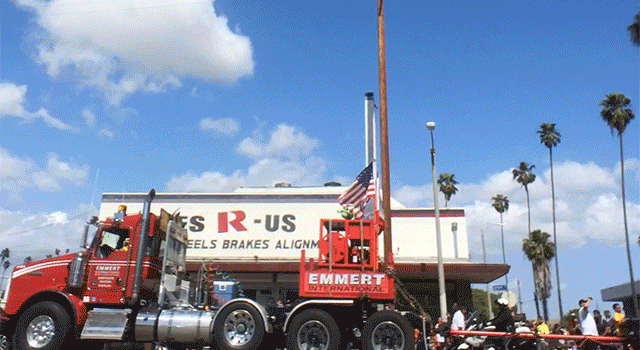Problem Set
Street Math, Space Shuttle Style
This activity is related to a Teachable Moment from May 18, 2016. See "Navigating LA with 65,000 Pounds of NASA Space Shuttle History."
Overview
It's no easy task assembling the only complete stack of NASA Space Shuttle Program flight hardware in existence. Especially when it means navigating a behemoth external fuel tank through the streets of Los Angeles! But that's what the California Science Center has done and it presented a unique set of navigational challenges.
In this activity, students apply their math problem-solving skills to a real-world challenge with a unique NASA connection. While considering the challenges encountered in moving a giant fuel tank through the streets of Los Angeles, younger students can practice their number sense skills and older students can solve problems using formulas – plus use mapping technology to help the external fuel tank find its way to the California Science Center.
Materials
Management
- The worksheet is broken into two parts, one for elementary school students and one for middle and high school students. Some younger students will be able to answer the more difficult problems so consider assigning them as bonus questions.
- Students can work individually or in pairs to solve the problems on the student worksheet.
- Calculators are optional but can simplify the calculations.
- Google Maps, MapMyRun, VeloRoutes and other similar mapping programs allow a user to create a map and measure distance merely by clicking (or right-clicking, in the case of Google Maps) on waypoints, or markers. Allow students to use their favorite method and capture a screenshot of their work.
- Use mapping technology to show a "street view" for discussion and help students gain an understanding of the scale of the external tank relative to surrounding buildings. (The tank lying on its side plus the transporter will be about three stories tall.)
Background
On May 21, 2016, the last-existing, flight-qualified external fuel tank for NASA's Space Shuttle Program made a 16.5-mile crawl through the streets of Los Angeles to its new home at the California Science Center. The nearly 154-foot long, more than 65,000-pound behemoth dubbed ET-94, was towed from the port in Marina del Rey (where it arrived after another epic voyage) to the science center. Eventually, it will be displayed with the space shuttle Endeavour and two solid rocket boosters in launch configuration – looking like it's ready to blast into space.
How They Did It
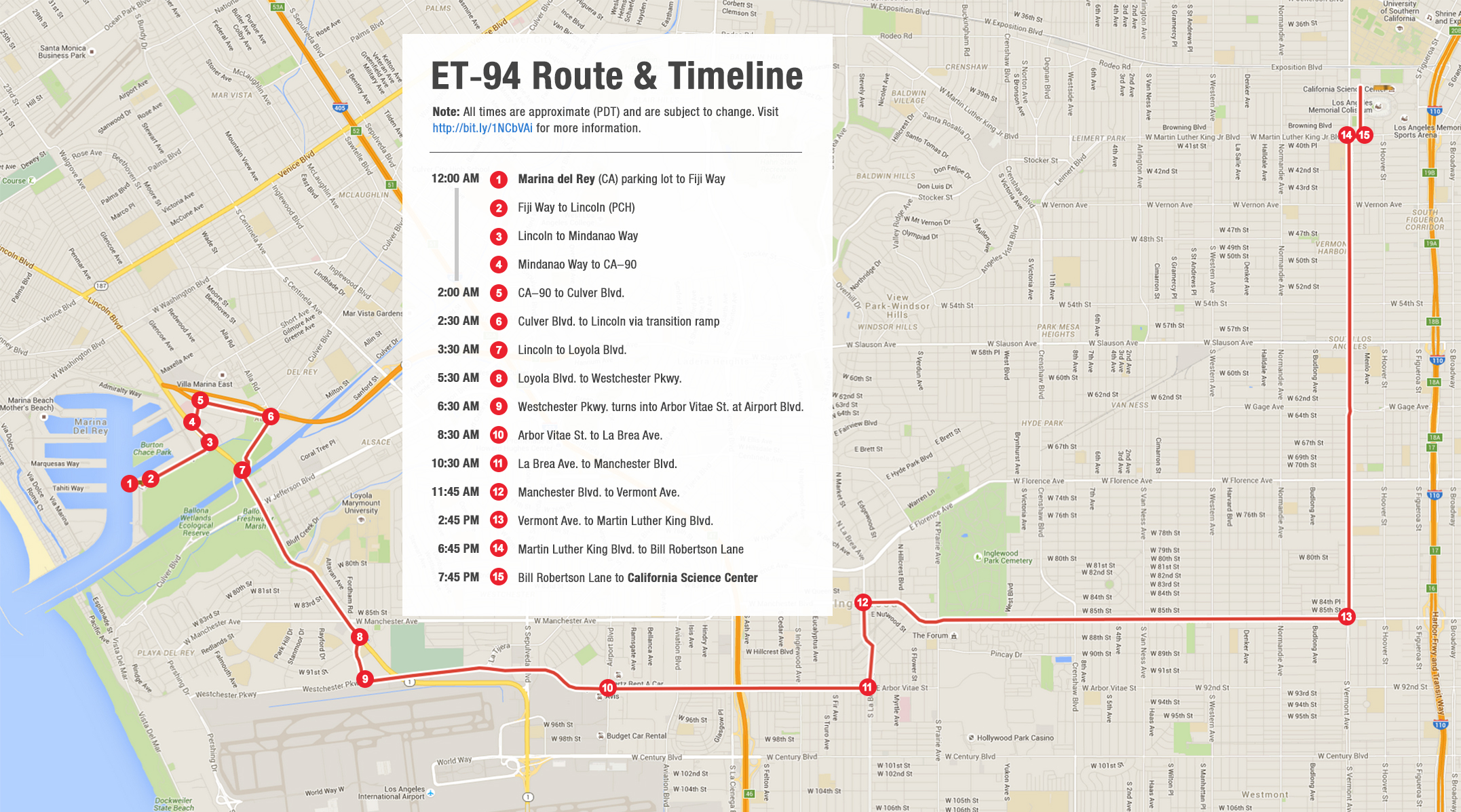
› Larger image | › Interactive Google Map
Transporting a large object such as the external tank is no small job. Shuttle external tanks were routinely transferred from their manufacture and assembly point at NASA's Michoud Assembly Facility in New Orleans to the Kennedy Space Center in Florida by way of barge. However, the trip to California is a bit more involved.
In April, ET-94 boarded a barge as usual, but this time traveled west, through the Panama Canal to Marina del Rey in Los Angeles. On May 18, the tank arrived, and three days later, was towed through the streets of Los Angeles – streets that were not designed to accommodate a giant rocket fuel tank!
› Watch the full route from New Orleans to Los Angeles taken by the shuttle's external tank
Los Angeles has some experience with this sort of challenge as the space shuttle orbiter Endeavour traveled a similar route from Los Angeles International Airport to the California Science Center in October 2012. Though Endeavour is wider, taller and heavier, ET-94 is longer. Resting on its side, the tank is half the length of a football field. So it presented a different set of navigational challenges – which, coincidentally, make for some great math problems.
As does this bit of external fuel tank history ...
A Slice of History
Most people will recognize the external tank as the giant orange structure that was attached to the shuttle to supply fuel to the shuttle's main engines during liftoff. Space shuttle external tanks carried freezing cold liquid hydrogen and liquid oxygen and were the only non-reusable part of what was called the Space Transportation System, or STS. But the tanks weren't always orange.
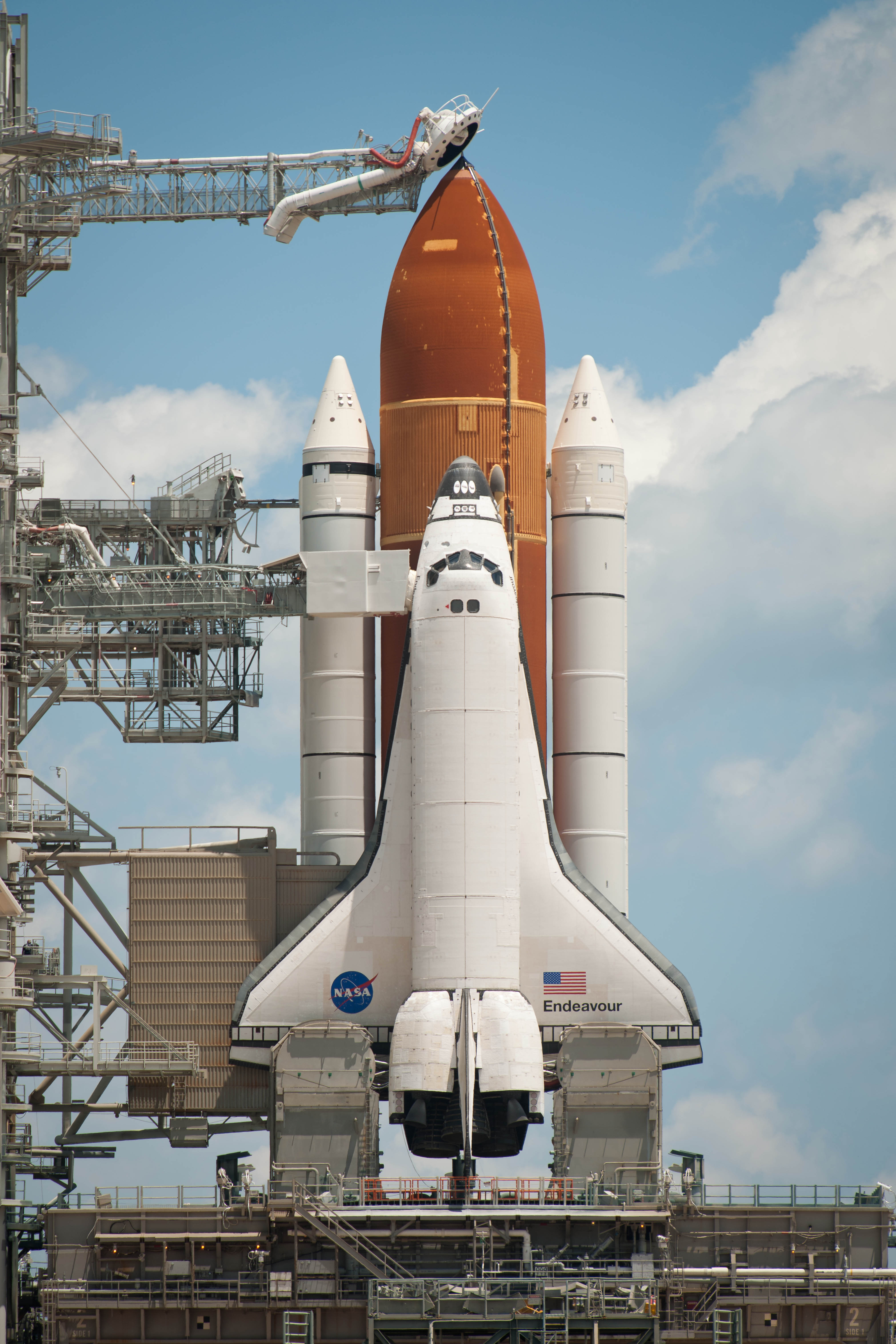
During the first shuttle missions, engineers were worried that the sun's ultraviolet radiation might damage the insulating foam, so the tanks were painted white. Because the white latex paint had to cover such a large surface area, it added a whopping 600 pounds to the already hefty tanks, which in their earliest iteration were called standard-weight tanks, or SWTs, and made of aluminum alloy 2219 welded via tungsten arc welding and coated with an inch-thick layer of polyisocyanurate foam. They weighed 77,086 empty and fuel added an extra 1,589,577 pounds!
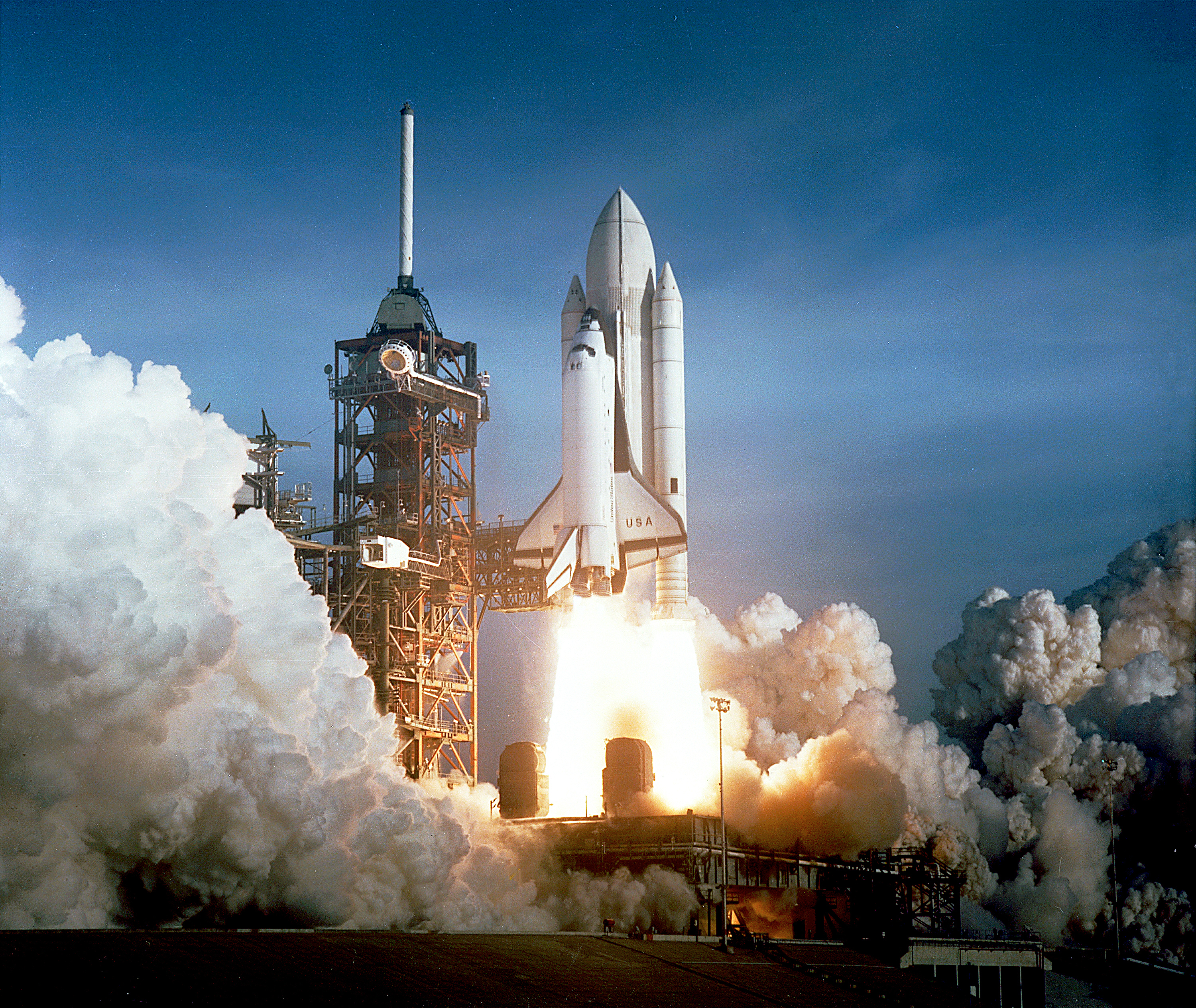
After the first two STS missions, engineers agreed that the sun's ultraviolet radiation merely caused the insulating foam to change color from its original tan to the familiar dark orange and did not pose a structural risk, so the use of white paint was discontinued. The saved poundage allowed subsequent space shuttle missions to carry an additional 600 pounds of science experiments.
Ever striving to lighten the load of the STS to make room for more science payloads, engineers developed the next iteration of external tanks, called lightweight tanks, or LWTs, using weight-shedding techniques including eliminating portions of stringers (structural stiffeners running the length of the hydrogen tank), using fewer stiffener rings, and modifying major frames in the hydrogen tank. This new tank provided a 6,426-pound reduction in specification weight that further evolved to an actual weight of 65,081 pounds for ET-94.
The final iteration of the external tank, called a super lightweight tank, or SLWT, shed an amazing 18,586 pounds from the very first specifications by using a new aluminum-lithium alloy (Al-Li 2195) and some new welding techniques.
Why It's Important
In 2003, disaster struck space shuttle Columbia during the STS-107 mission. The shuttle was fueled by ET-94's sister tank, ET-93, and as the only remaining lightweight tank in existence, ET-94 was heavily analyzed to examine the role played in the incident by the tank's external insulating foam. Several chunks of foam were removed from the tank during the analysis, necessitating future repair work to return it to its original appearance.
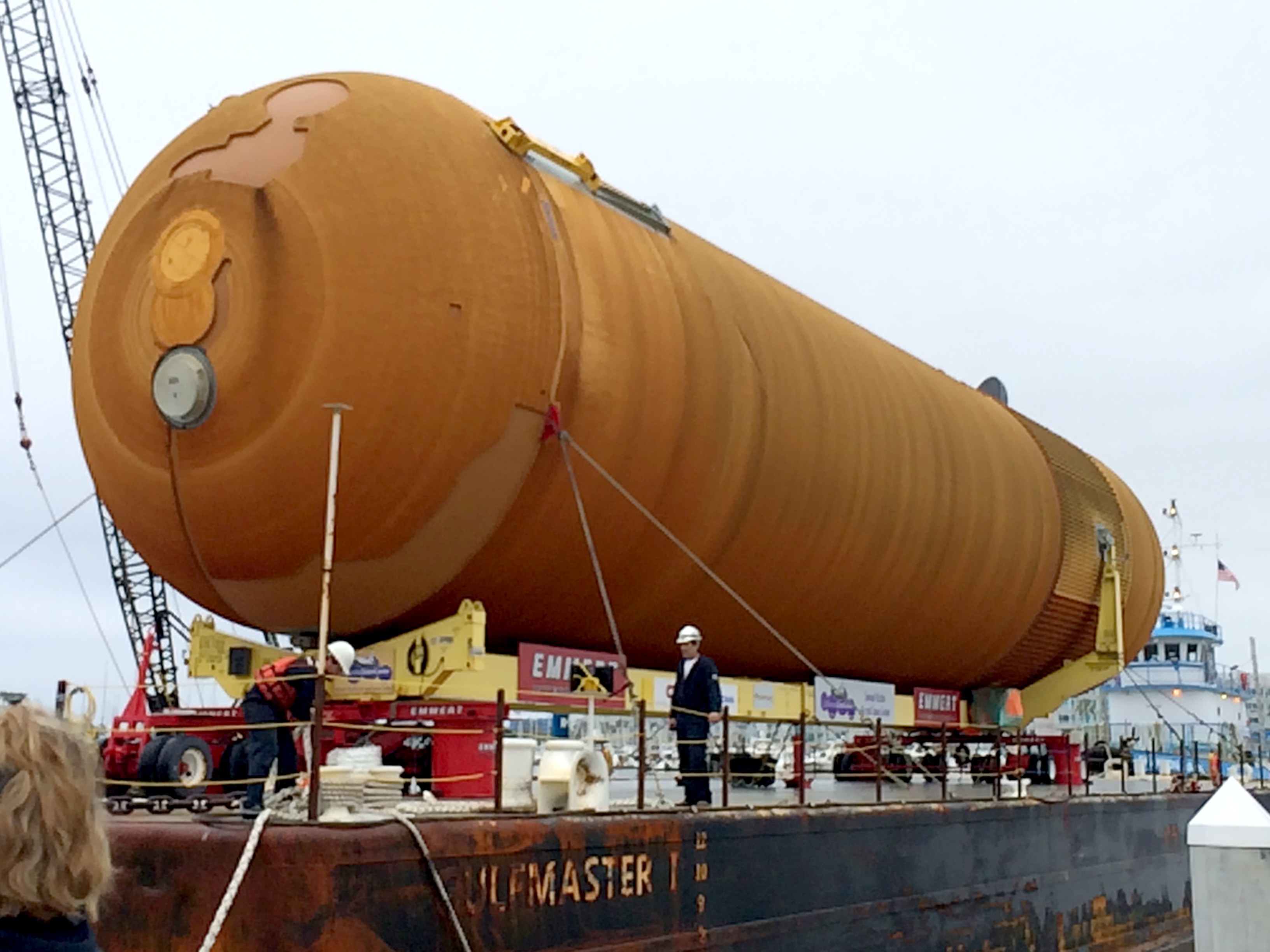
After analysis was complete, the tank resided at the Michoud Assembly Facility, awaiting an opportunity to fly to space that never came, as it could not compete with the svelteness of the new super-lightweight tanks and would require some weighty upgrades to meet new safety standards. Eventually, NASA donated ET-94 to the California Science Center for public display. When finalized, the display will be the only complete stack of STS flight hardware in existence.
Procedures
- Explain to students the arrival of ET-94 in Los Angeles and some of the logistical challenges of transporting it through the city.
- Explain (or have students research) the role of the external tank in the historic Space Transportation System.
- Explain that external tanks were engineered to be lighter and lighter over the years to conserve mass and allow for more science experiments to be taken to space.
- Assign the student worksheet problems according to the abilities of your students and the availability of technology.
- Six standard-weight tanks, 86 lightweight tanks, and 43 super lightweight tanks flew on Space Shuttle missions. Additionally, three tanks were built and used as test articles, including ET-94, but these never flew in space. How many Space Shuttle external tanks were built? How many flew in space?
6 + 86 + 43 + 3 = 138 tanks built; 135 flew in space
- ET-94 is an example of the second-generation external tank for the space shuttle known as a “lightweight” tank. The original standard-weight tanks weighed a whopping 77,086 lbs. By decreasing the thickness of the aluminum used to build external tanks, the lightweight tank was born, shedding 6,426 lbs from the specification weight of the original. How much did the first lightweight tanks weigh?
77,086 – 6,426 = 70,660 lbs
- Over time, lightweight tanks evolved and became even lighter in weight, such that one of the last LWTs manufactured, ET-94, weighed in at 65,081 lbs. How much more weight were engineers able to save when they built ET-94 compared to the first LWT?
70,660 – 65,081 = 5,579 lbs
- The next iteration of external tanks utilized a new type of metal and some new welding techniques to further reduce the external tank specification weight by 6,581 lbs. How much did one of these super lightweight tanks weigh?
65,081 – 6,581 = 58,500 lbs
- ET-94 will travel through the streets of Los Angeles lying down on a wheeled transporter that lifts the external tank approximately 7 feet off the ground. ET-94 is approximately 153.8 feet in length and 27.6 feet in diameter. How long and how tall will the entire moving structure be as it travels through the streets of Los Angeles? What challenges might be encountered on the move?
153.8 feet long and 34.6 feet tall
Challenges include, but are not limited to overhead power lines, traffic signal lights, signage, and tight turns. - Space Shuttle external tanks are covered in a layer of foam insulation that is only 1-inch thick in most places, but adds 4,823 pounds to the tank’s weight. Though the foam’s density varies with the type, an average density is about 2.4 pounds per cubic foot. What is the volume of foam used on an external tank?
4,823/2.4 = 2010 cubic feet
- The first two Space Shuttle external tanks were painted white in an effort to protect the insulating foam from ultraviolet light damage. It was later determined that the foam was not damaged by uv light, but merely changed color from a light tan to orange when exposed to sunlight. The white paint added an additional 600 lbs to the tank. Considering that an average gallon of heavy-duty exterior latex paint weighs approximately 10.53 lbs with 47.8% solids by weight, what is the approximate weight of a gallon of dry paint? Approximately how many gallons of paint were used to paint a Space Shuttle external tank?
10.53 x 0.478 = 5.03 lbs
600/5.03 = 119.28 gallons or 120 gallons - Use geometric shape formulas to determine the approximate surface area of the external tank. Considering that one gallon of paint covers a minimum of 250 square feet, do your calculations of the number of gallons used (question 7 above) jibe with the number of gallons required to cover the surface of the external tank? Why or why not? What factors might induce error in your calculations?
Rough over-estimate of surface area of a cylinder = 2πrh + 2πr2 = (2π x 13.8 x 153.8) + (2π(13.8)2) ~ 14,500 square feet
More refined surface area estimate, using surface area of a (shorter) cylinder plus surface area of a cone or semi-circle -> Shorter cylinder = 0.8 * 153.8 ~ 123 feet high; Cone height ~30.8 feet =>
2πrh + πr(r+√(h2+r2))
(2π x 13.8 x 123) + (π x 13.8)(13.8 + √(30.82 + 13.82))
~ 10,665 + 2,061 ~ 12,700 square feet
Surface area/250 sq feet per gallon ~ 50-58 gallons
Does not take into consideration possible absorption of paint by foam or multiple layers of paint used. - Use the Google Maps “measure distance” function or any distance mapping technology to determine the number of miles ET-94 will travel on the streets of Los Angeles.
Approximately 16 miles
- It is estimated that ET-94’s trip through the streets of Los Angeles will take 16-18 hours because it has to slow to carefully navigate turns. What is the average speed at which ET-94 will travel? Research: What was the maximum speed attained by an average external tank attached to a Space Shuttle during launch?
A) Approximately 1 mile per hour
B) 17,500 mph - Examine the route map for ET-94. Why does ET-94 make a left turn from Fiji Way onto Lincoln (PCH) and take such a roundabout way? Why not turn right from Fiji Way onto Lincoln (PCH)?
It would not fit under the overpass at Culver Blvd. and Lincoln (PCH).
- ET-94 is 153.8 feet long, has a diameter of 27.6 feet, and will be transported on a dolly that will lift it approximately 7 feet off the ground. A Mack truck will be pulling the dolly which has independent steering on the fore and aft axles. Use the Google Maps “measure distance” function to plot the path of ET-94 as it turns from the Marina freeway onto Culver Blvd. In examining satellite imagery and street views, will ET-94 be able to make the turn without any removal of trees, power lines, or other obstructions? What, if anything, must be removed?
It might make it without moving anything, but it would be a tight squeeze. It would be safest to remove the traffic signal on the inside (southwest) corner.
Elementary
Middle/High School
- Six standard-weight tanks, 86 lightweight tanks, and 43 super lightweight tanks flew on Space Shuttle missions. Additionally, three tanks were built and used as test articles, including ET-94, but these never flew in space. How many Space Shuttle external tanks were built? How many flew in space?
- Have students compare and discuss their answers, explaining their reasoning for the solutions.
- View the transport of ET-94 in person, follow it on the news, or view online imagery and video of the event. Especially note the careful approach to turns and obstructions, such as power lines and traffic signals, that may have been moved for the event.
Discussion
- Routing a giant piece of spaceflight hardware through city streets is no small task. Encourage students to engage in discussing the challenges of routing and use mapping technology to show a "street view" for discussion. Even younger students can understand the need to remove overhead power lines once they see the street view and understand the scale of the external tank.
- Point out to students that the fuel for the space shuttle was liquid hydrogen and liquid oxygen, and that these substances that we know usually as gases are liquids when cooled to a very low temperature. How would you keep very cold liquids cold?
Insulation. - Ask students to hypothesize about the makeup of the exhaust from the space shuttle main engines, fueled by the external tank.
The external tank carried twice as much hydrogen, H, as oxygen, O, and when combined, those two elements cause an explosion and the by-product is water/steam, H2O.
Assessment
- Individuals or pairs of students should compare work and discuss how their results agree or disagree. For disagreements, students should talk through how they arrived at their answers.
- Check students' work against the answer key.








